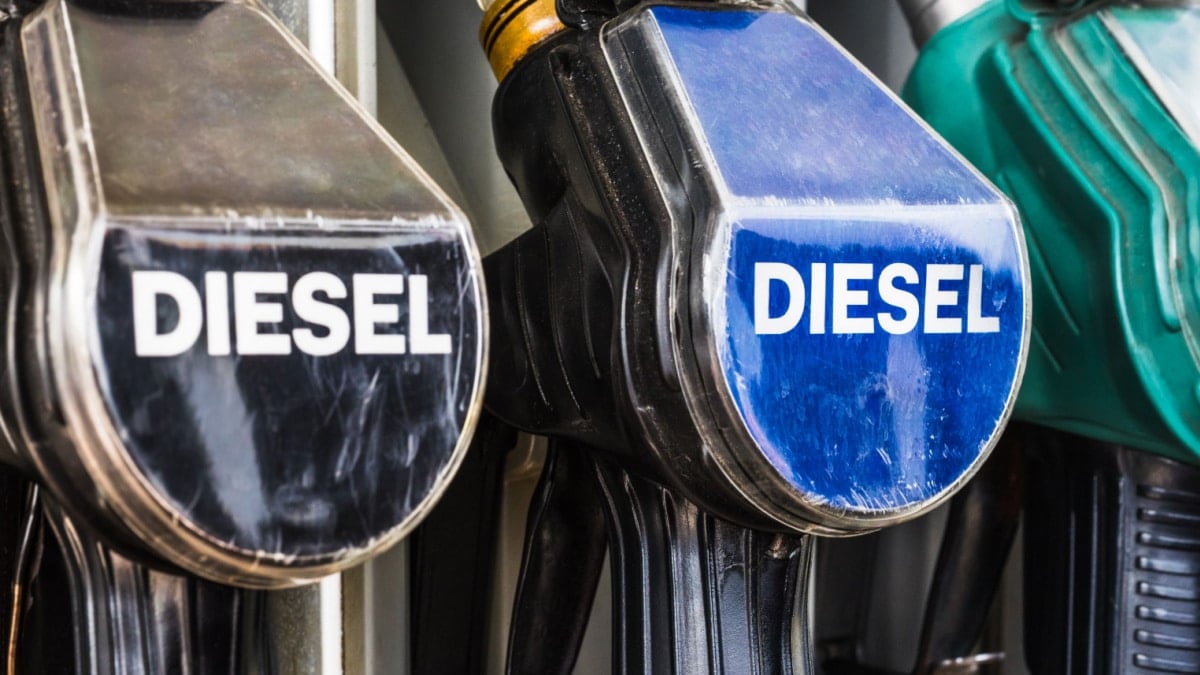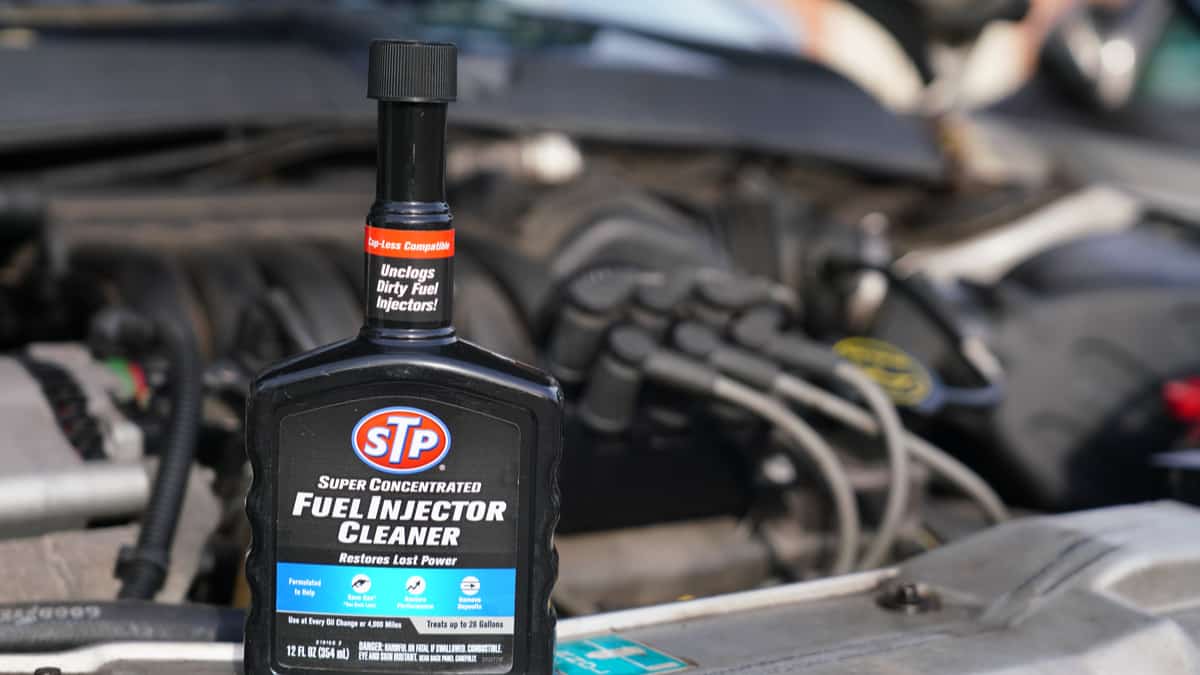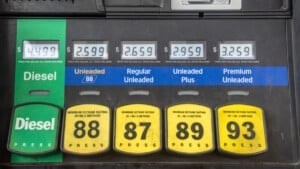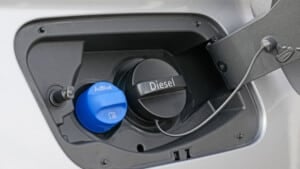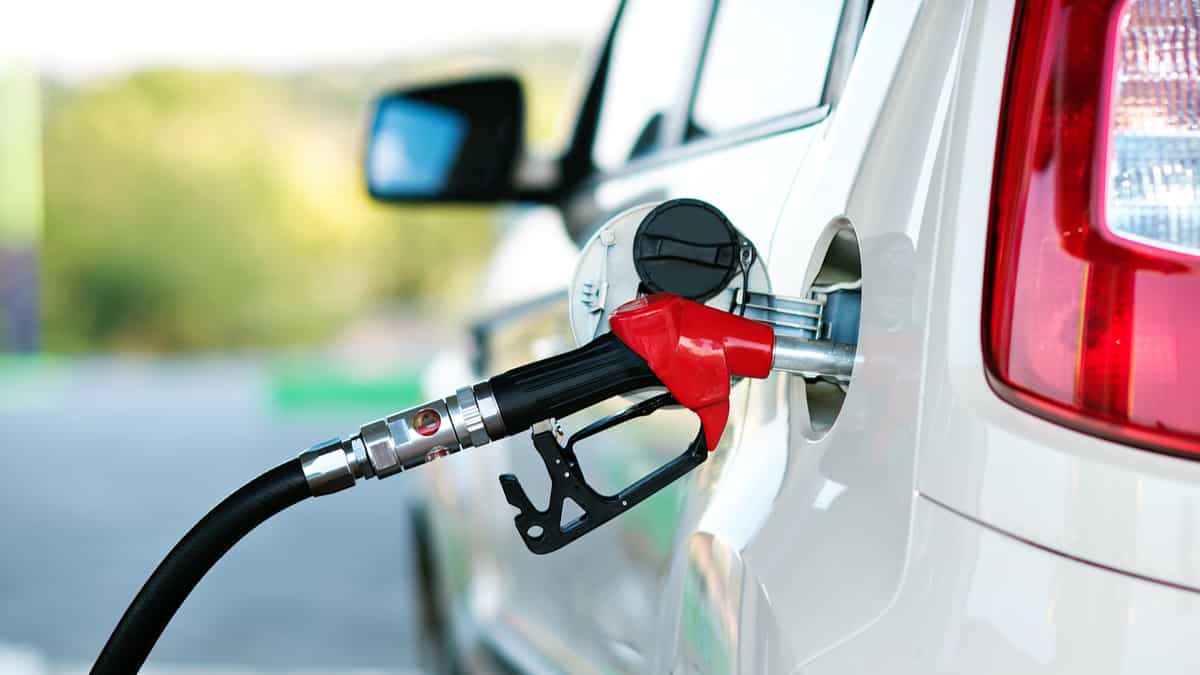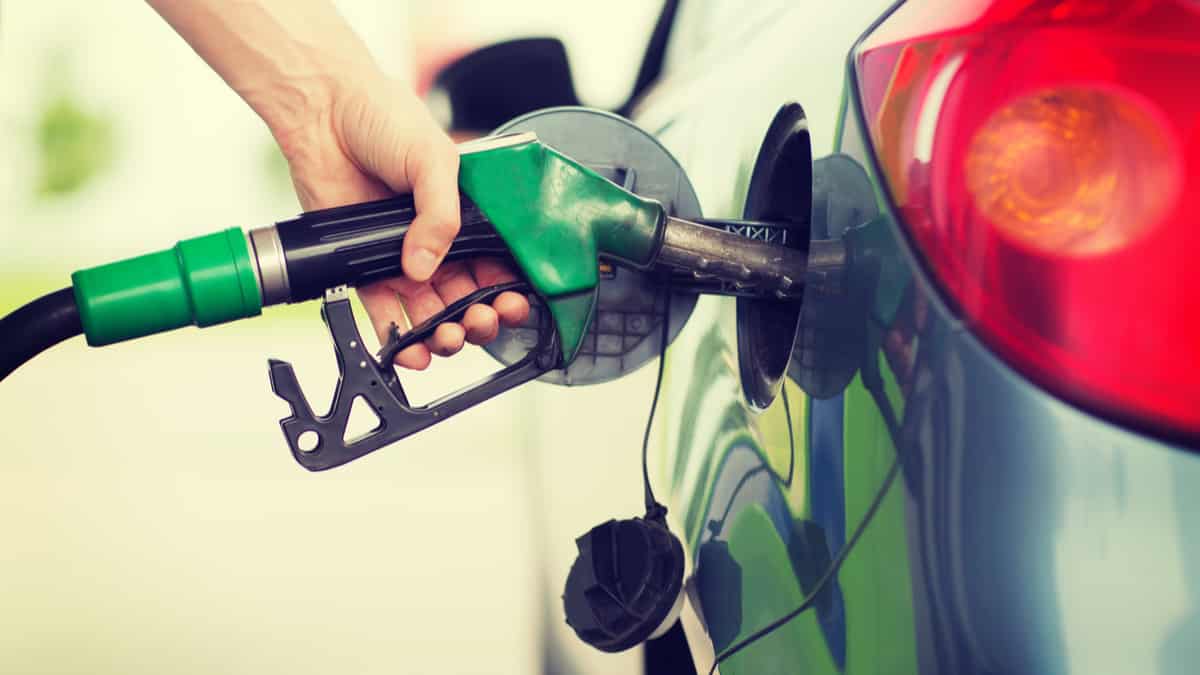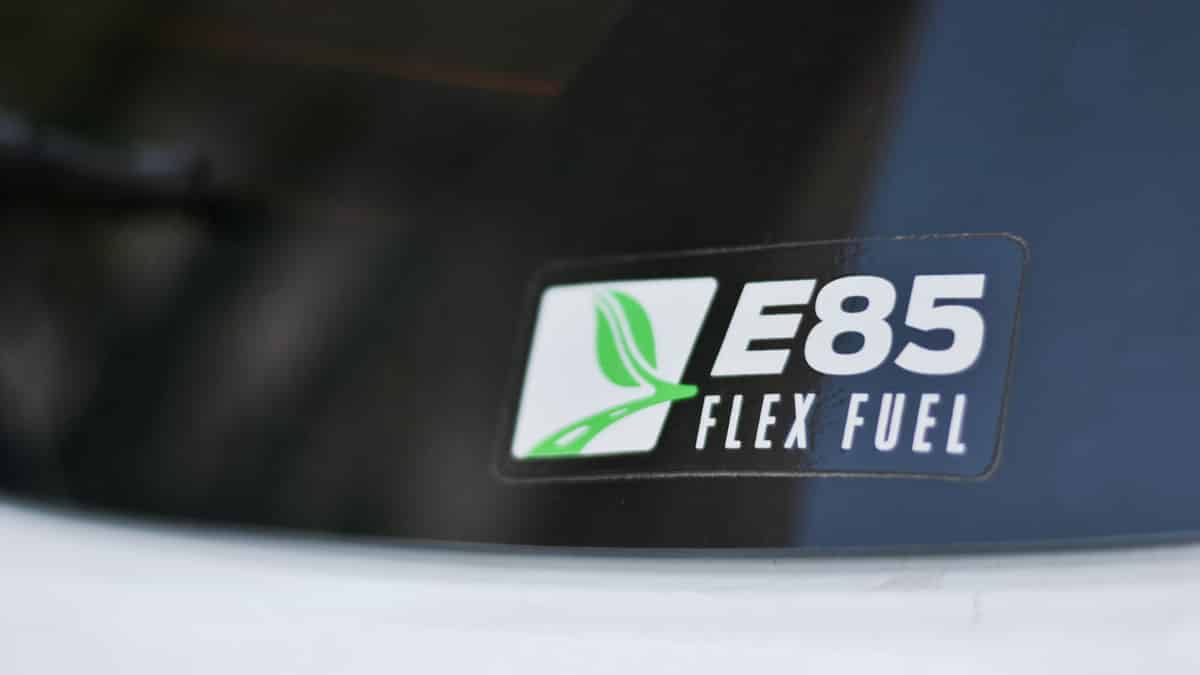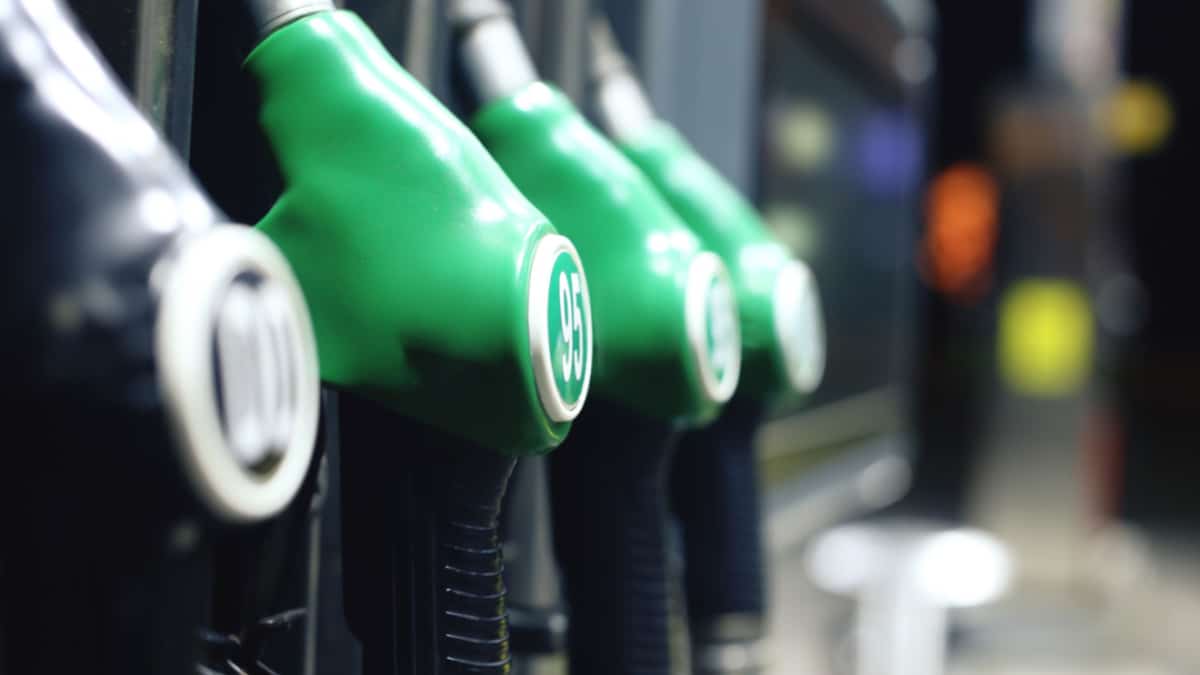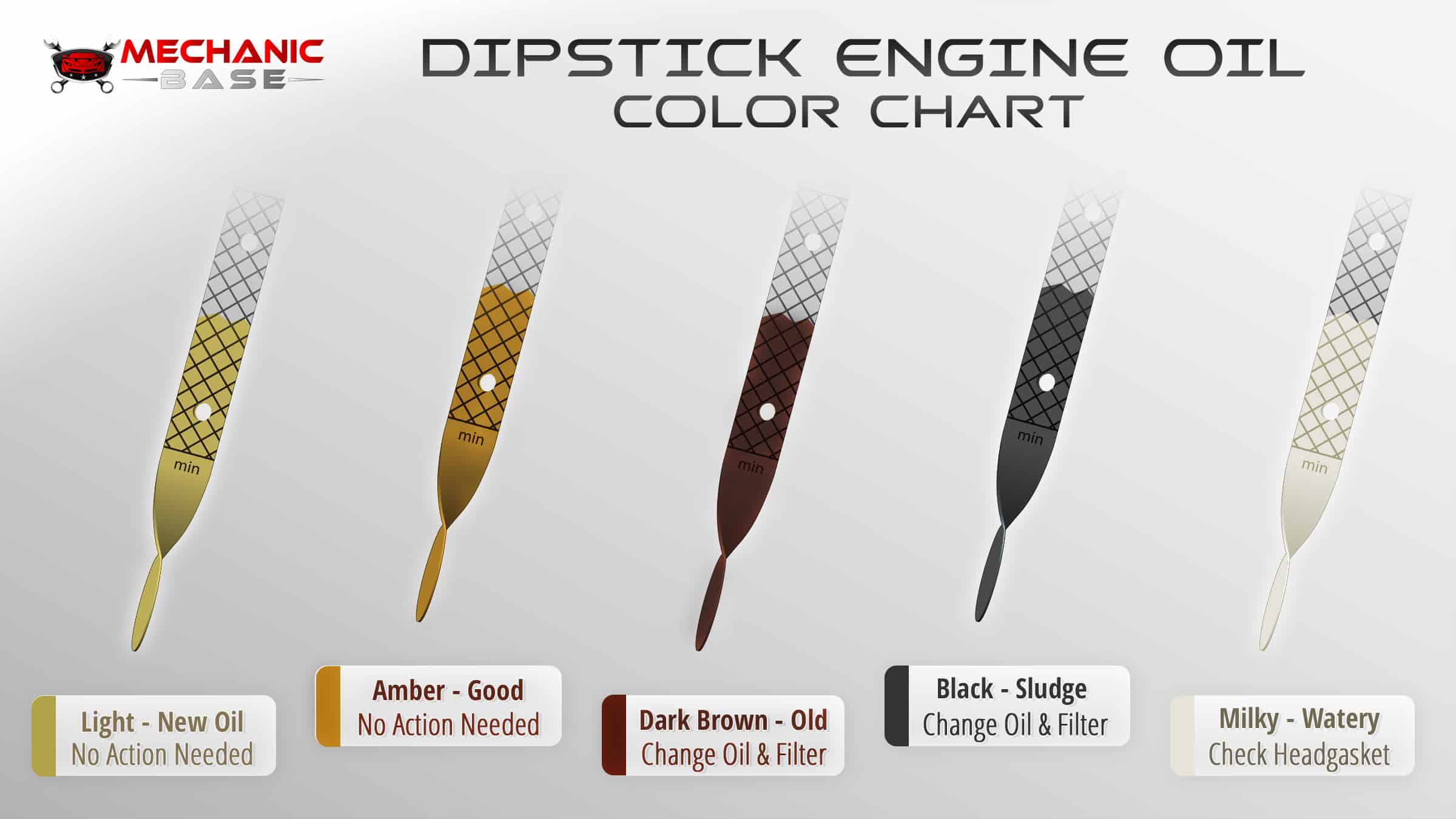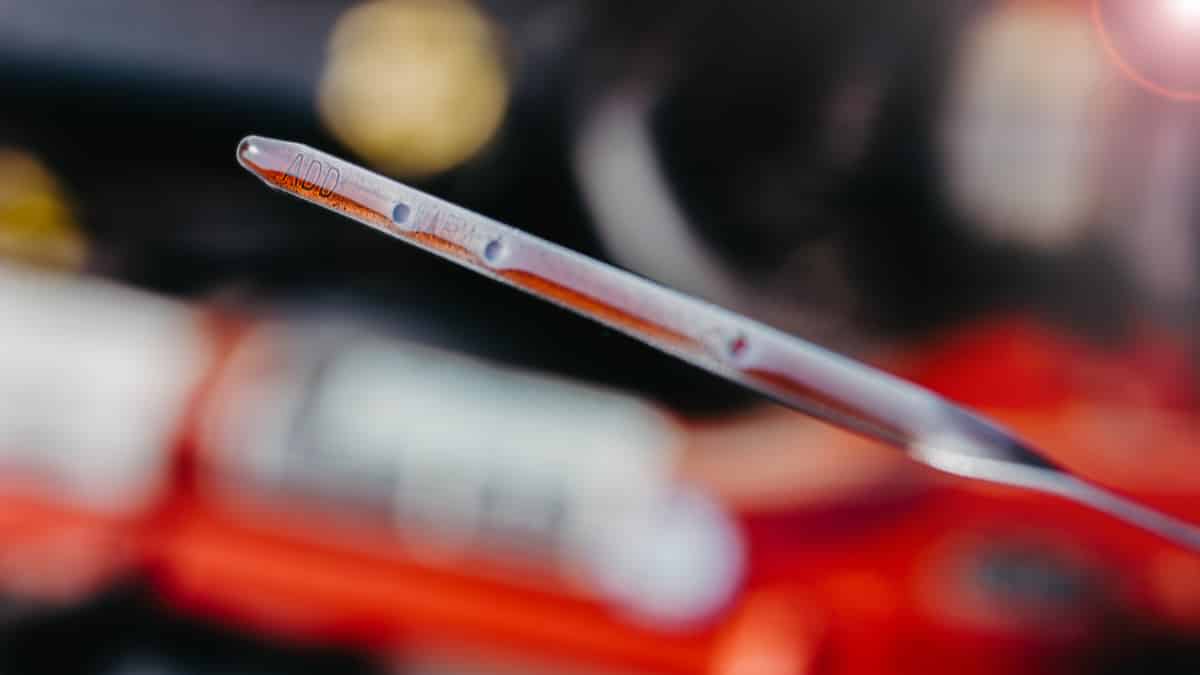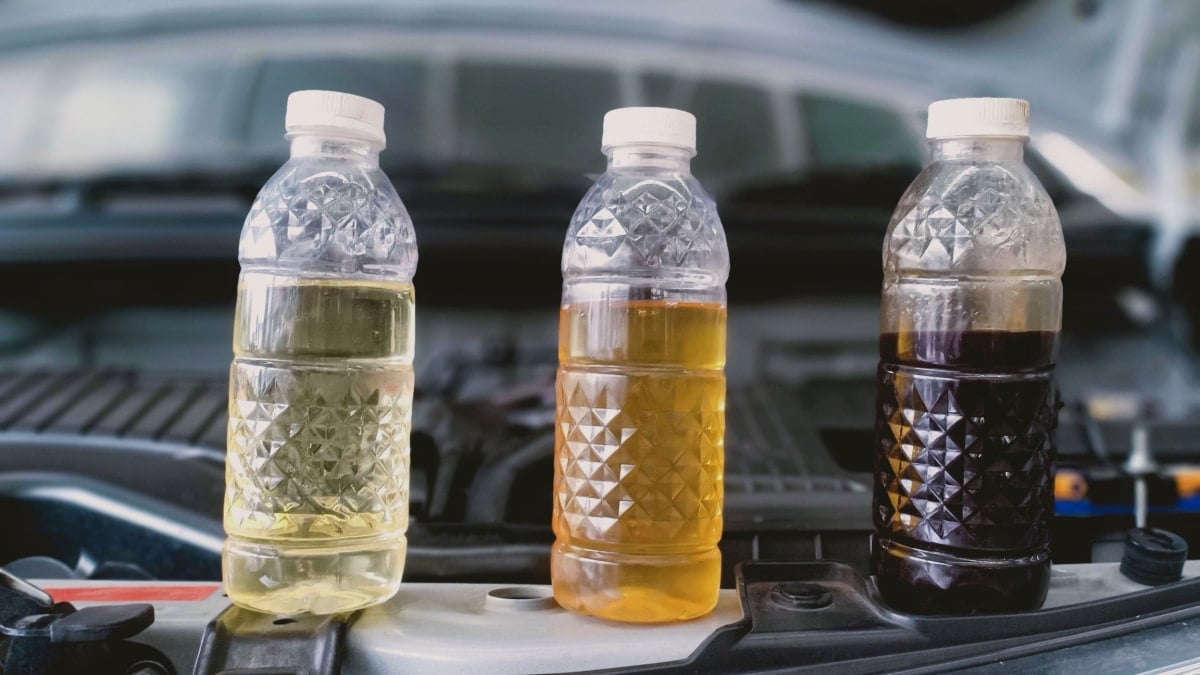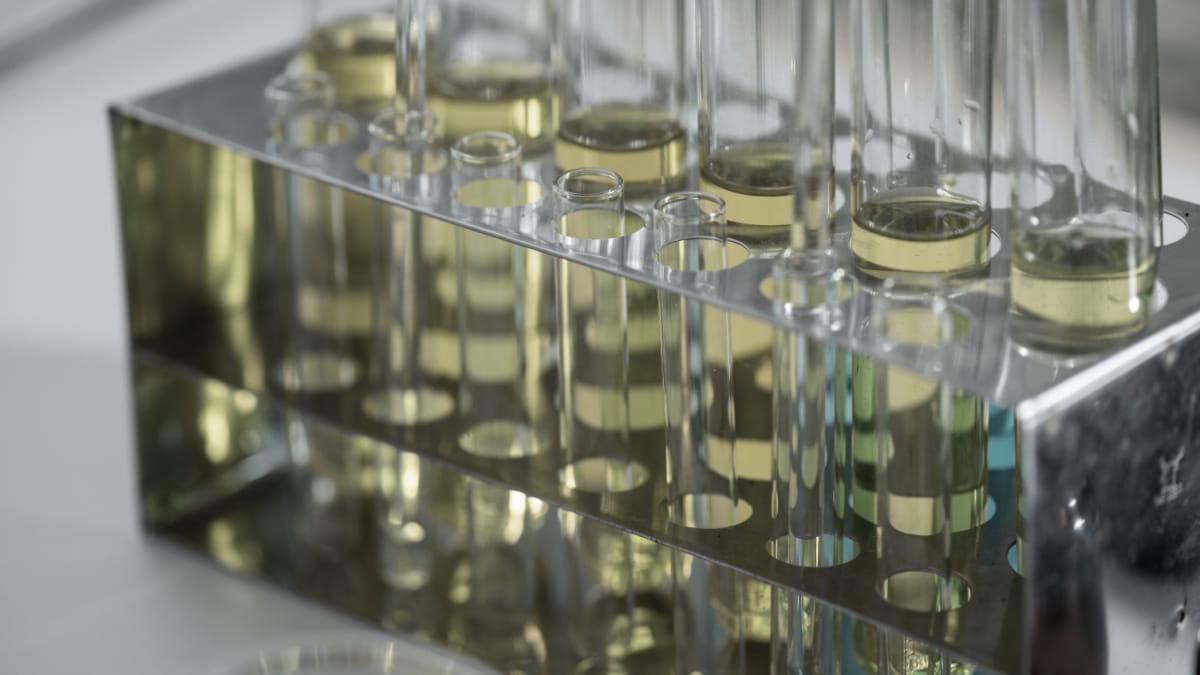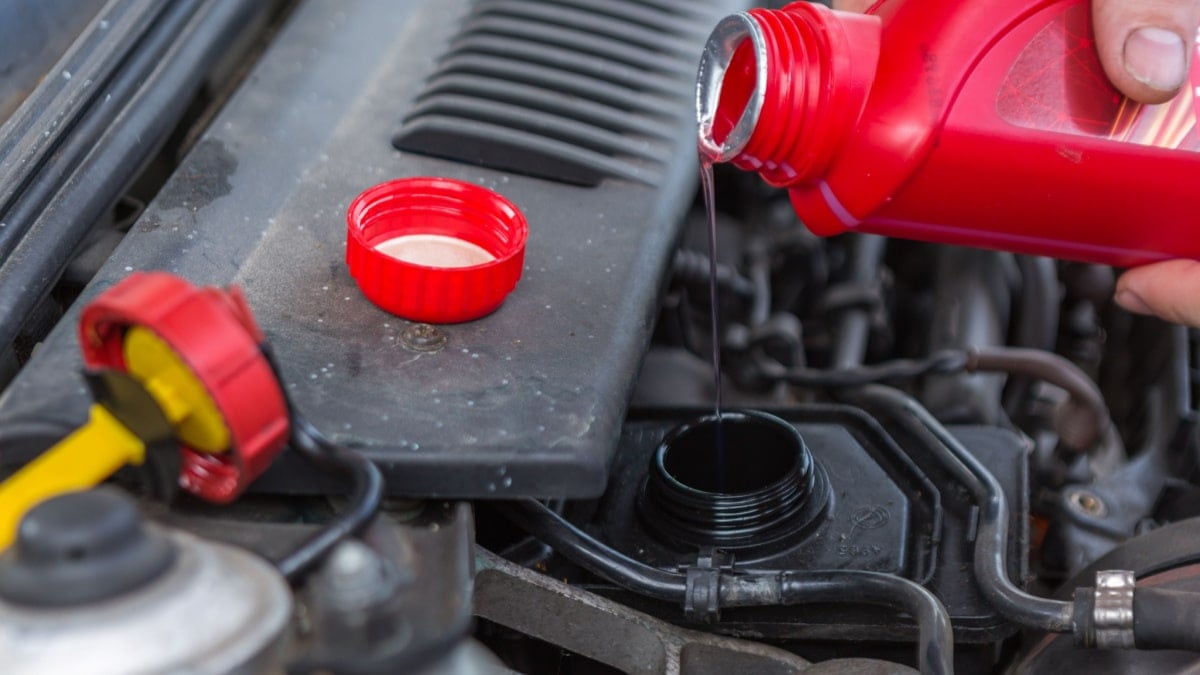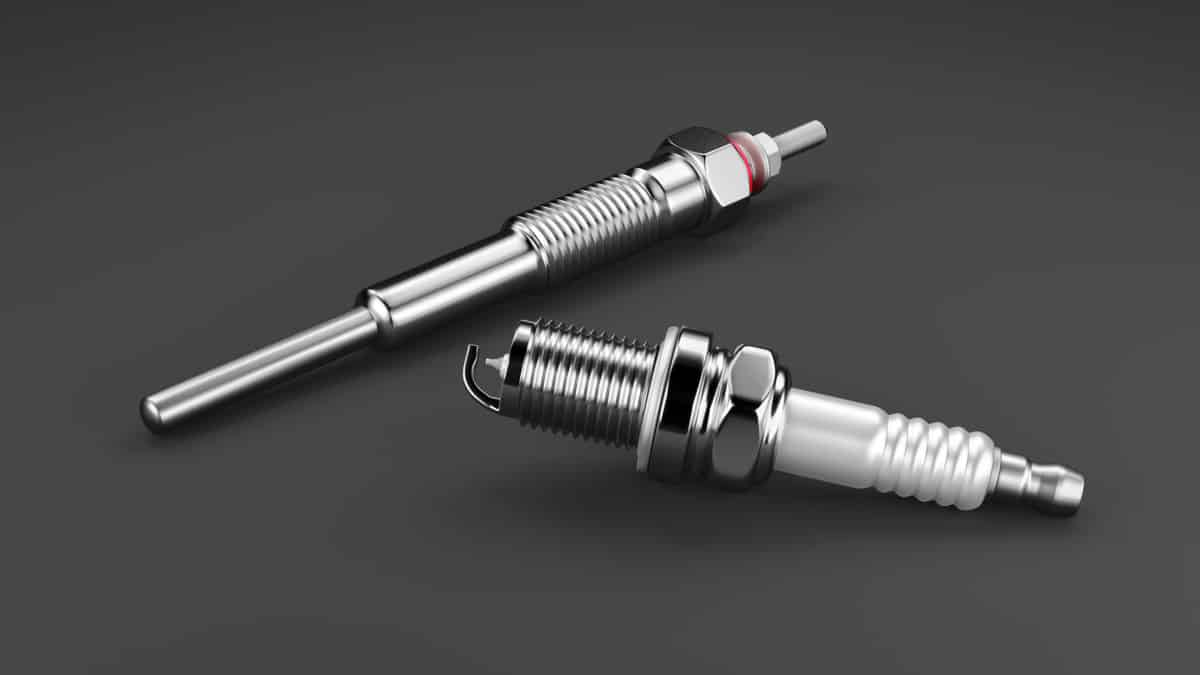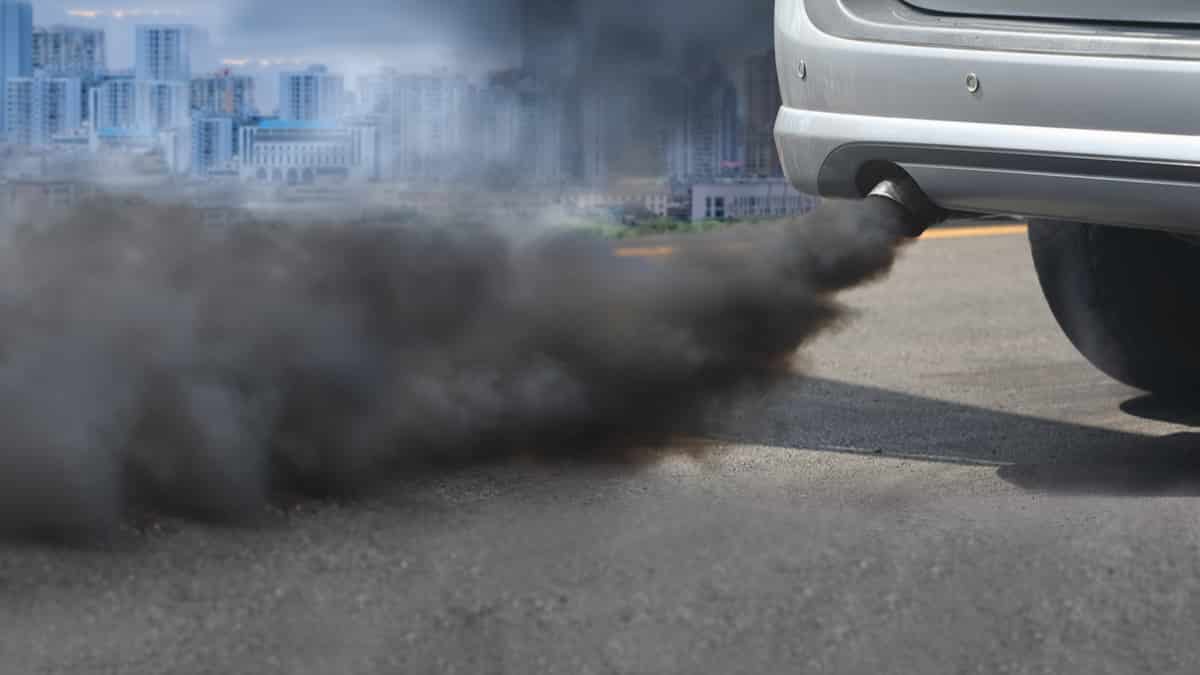If you drive a diesel vehicle, you know there are different types of fuel available. Beyond what is available at every diesel gas pump, you may have seen other options available and wondered if you could use them. You may even wonder – what color is diesel fuel?
In this guide, we look closer at the colors of diesel fuel. Spoiler alert – there’s more than one color. We also examine why there are different colors and determine which one you should use. There’s even a section showing what will happen if you use the wrong one. At the end of our article, you’ll find some answers to questions you may not have known you have.
What Color Is Diesel Fuel?
On-road diesel fuel is clear or slightly green. It’s the most common type of diesel sold at the fuel pumps. There’s also red diesel that’s meant for off-road and heavy equipment use only. Rarely will cars have blue diesel in the tank, which is the same as the red diesel, but specifically dyed for government use.
The color of the diesel fuel has nothing to do with what color the pump handle is. The majority of diesel pump handles are green, but that’s not because the fuel is green. In fact, some stations use a black or yellow handle to dispense diesel too, which is why you should always check the pump carefully before putting anything into your vehicle’s tank.
If you use the wrong type of fuel in your engine, whether you put diesel in a gas engine or vice versa, you could end up damaging the motor. If you aren’t sure what type of fuel you are pumping, ask for help.
What Are The Differences Between Clear Diesel vs. Dyed Diesel?
Aside from the color, there aren’t many differences between the different types of diesel fuel. You have on- and off-road diesel available, each meant to be used in different applications. There’s also a type used strictly by the government.
Let’s look at the three colors of diesel fuel available today.
1. Clear Diesel

Regular on-road diesel fuel is clear by nature. It may also have a slightly green tint to it from the refinery. If you look at fresh diesel from the fuel pump, these are the only two colors you should see. If the color looks more yellow or slightly darker, it could be old and should be avoided.
Ultra-low-sulfur diesel (ULSD) has lower sulfur contents than conventional diesel. Since 2016, nearly all of the petroleum-based diesel fuel available is ULSD.
2. Red-Dyed Diesel
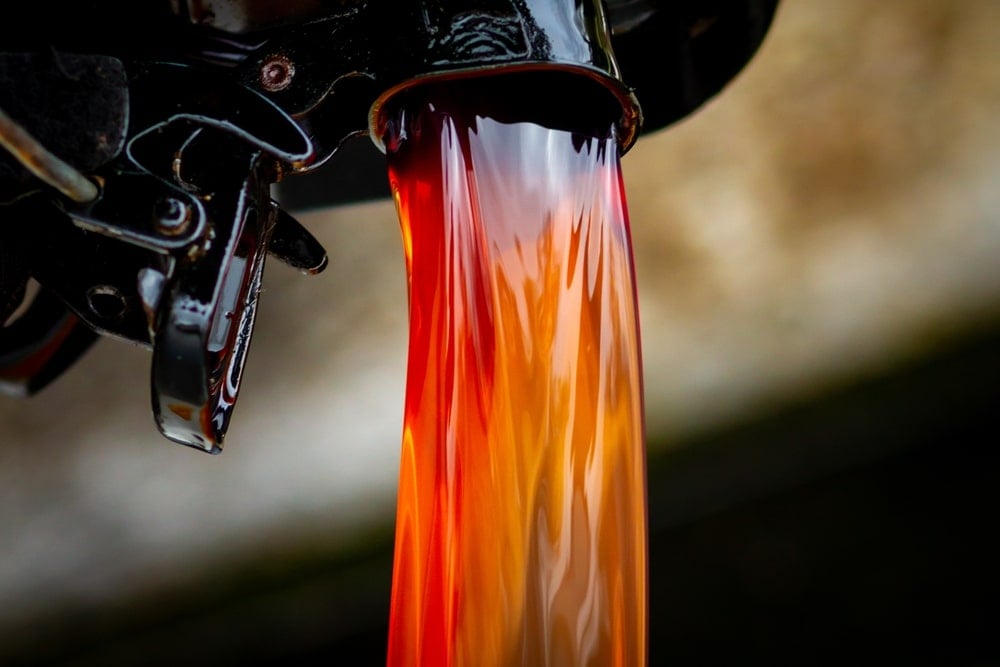
When diesel has a red dye in it, it’s meant only for off-road use in the United States. This dye is placed in the diesel fuel to ensure it’s only used for off-road vehicles and equipment.
What makes the red diesel different isn’t the composition. In fact, other than the dye, it’s the same fuel as the clear type. It only shows that this fuel wasn’t taxed the way on-road fuel is. This dye comes from a chemical additive that is normally either Red 26 or 164.
You can use the red dye diesel in any off-road vehicle. It can also be used in other off-road applications, such as in your generator, for heavy construction equipment or your farm tractor, as long as you aren’t taking these items on the road.
3. Blue-Dyed Diesel
Again, here’s a different color diesel fuel that isn’t any different from what you get at the pump other than the hue it exhibits. The blue-dyed diesel is also considered an off-road variant.
However, this diesel fuel isn’t meant for use by the public. You can’t go buy blue diesel at any local pumps. It’s only intended for use in government vehicles and equipment in the United States. Again, this type of diesel fuel isn’t meant to be used for on-road use, even by the government.
Dyed Diesel Regulations
Dyed off-road diesel is not taxed the same way regular fuel is. Diesel fuel taxes vary by region, but the off-road dyed variety doesn’t follow the same regulations. Improper use of this fuel can lead to significant financial penalties. In some cases, it even leads to jail time. There are different regulations for varying parts of the supply chain.
Distributors
Distributors aren’t allowed to knowingly transport the off-road fuel with the purpose of supplying it to on-road vehicles. On top of that, fuel stations can’t carry dyed off-road diesel to sell for use in on-road vehicles.
It’s the responsibility of the distributor to know what type of fuel is being transported and for what purpose. Not only should the trucking company know what’s going on, but the driver should be informed as well.
Fuel Stations
The fuel station is just as responsible for what’s being sold. The public fuel station isn’t allowed to carry off-road dyed diesel to sell for use in on-road vehicles.
Basically, the station can’t order the off-road fuel or supply it unknowingly. Tanks at fuel stations can be tested to check the diesel.
Diesel Customer
All of the responsibility doesn’t just lie on the distributor and fuel station. You have to follow the rules as a customer too.
It’s illegal to put off-road diesel in your on-road vehicle. Be wise and stick to using what’s meant for your vehicle type.
Why Does The US Government Regulate Diesel?
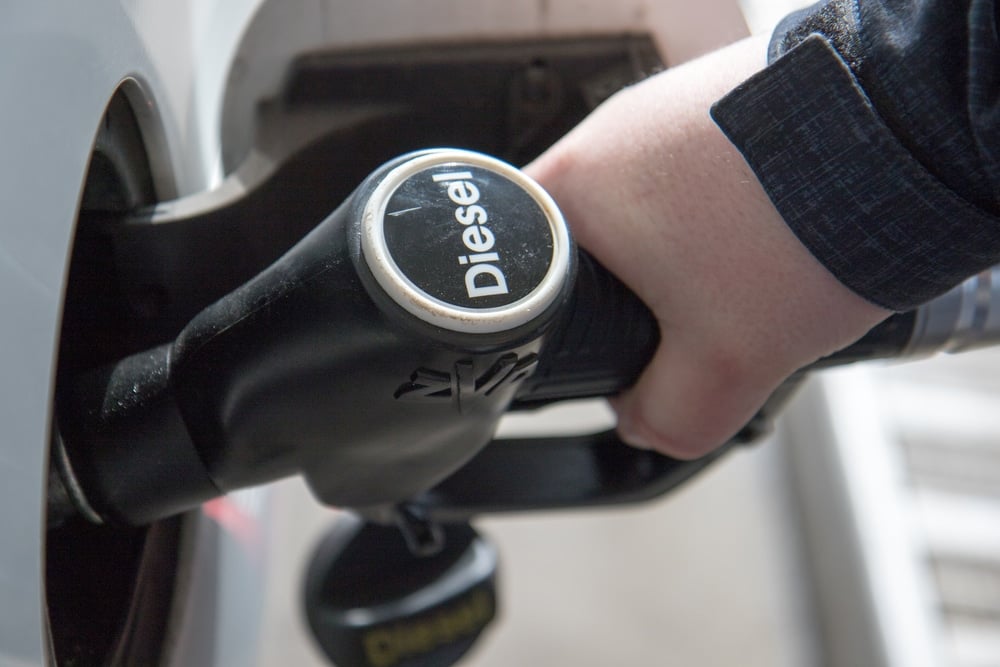
According to the Environmental Protection Agency (EPA), the sulfur amount in diesel fuel is linked to pollution after it’s been burned in the car engine. The higher the levels of sulfur, the more pollution there is. As diesel fuel gets burned, the emissions resulting from the use contribute to air pollution, which has an effect on human health as well.
Some of the pollution coming from the exhaust of diesel fuel vehicle include the following:
- Soot/particulate matter (PM)
- Nitrogen oxide (NOx)
- Carbon monoxide (CO)
- Hydrocarbons (HC)
- Additional hazardous air pollutants (HAPs)
Some of these also contribute to ground-level ozone pollution, known as smog. These particles can also lead to an increase in acid rain.
As far as human health, these contribute to:
- Heart disease
- Lung disease
- Allergic reactions
- Asthma
- And more
Finally, these pollutants damage plants and other agricultural crops. They have also been known to contaminate water resources and do harm to animals.
For this reason, the EPA is strict with diesel regulations. The federal government continues to work toward ensuring the environment remains as clean as possible.
Can I Use Red-Colored Diesel For My On-road Vehicle?
No, it’s illegal to use red-colored diesel for any on-road vehicle. If you plan to use red diesel in your vehicle, it should only be used off-road or in equipment that doesn’t go on the roads. If you knowingly use off-road diesel for your regular vehicles, the police can fine you thousands of dollars.
It’s not that difficult to find out if you are using the wrong fuel. All it takes is for an officer to pull you over and take a sample from your fuel tank. A black light can be used to spot the dye’s presence in the fuel. The officer can also check different locations within the engine compartment.
It’s also illegal to try to remove the dye from the fuel. On both the federal and state level, you can be prosecuted. Even your best efforts to remove the dye will likely come up short. If you attempt to dilute some with clear fuel, it won’t turn colors easily. A lot of clear fuel is needed, with a small amount of red diesel to make it look even remotely the same.
Even if you are able to get most of the red out, the fuel can be tested by a lab. While this isn’t common, you should be prepared that it could happen.
It’s not just the driver that should be careful about using the wrong type of diesel. Distributors are just as much on the line if the fuel is transported to a place in hopes of selling it as on-road fuel. Beyond that, the retail location can be in just as much trouble.
What color is diesel at the pump?
If you purchase diesel fuel for on-road use, the liquid is going to be clear with a green tint. As the diesel fuel ages, the color may start to turn yellow or light brown. This color diesel fuel should be avoided because it has been sitting for too long and could cause damage.
How can you tell gas from diesel?
First, the pumps should be labeled differently, keeping you from using the wrong fuel. Additionally, gasoline is thinner in nature and has a different odor that’s quite distinct. Diesel fuel is much thicker, looking closer to what you would expect from a low-weight motor oil.
Can diesel be in different colors?
Yes, on-road diesel is clear with a light green tint to it. This diesel is sold at regular fuel stations and is clearly marked on the pumps as different from gasoline. Off-road diesel is dyed red to keep it from being used on the roads. There’s also a blue diesel that is used for off-road purposes by the government.
What color is original diesel?
Diesel coming from the refineries to the fuel station is clear with a slight green tint. If the diesel fuel starts to turn yellow or light brown, it means that the fuel has gotten older. Red and blue types of diesel exist but are strictly meant for off-road purposes and should never be sold with the on-road fuel at stations.
What color is clean diesel?
Clean diesel is clear and can have a greenish tint to it. Once this diesel fuel gets old, it starts to have a yellow color or it turns brown. We don’t recommend using diesel fuel that’s old. Additionally, red and blue color diesel are available, but both are intended for off-road usage only.
It may seem like there’s a lot to learn about diesel fuel and what can be used where. If you want to avoid getting a hefty fine, it’s important that you know what should be put in your vehicle. If you drive on the road with your diesel vehicle, you can only get the variety that’s at the gas station pump and looks clear with a green tint.
Otherwise, if you are using equipment on your farm, running your generator or have a work truck that’s never taken on the road, you can use the red-dyed off-road diesel. There’s also blue diesel, but unless you work for the government, you’ll probably never see this type.
Learn more:
- What is AdBlue and Why Do Diesel Cars Need It?
- What Happens if You Put Gas in a Diesel Engine?
- Can You Use Regular Gas in a Flex Fuel Vehicle?
Categories: General
